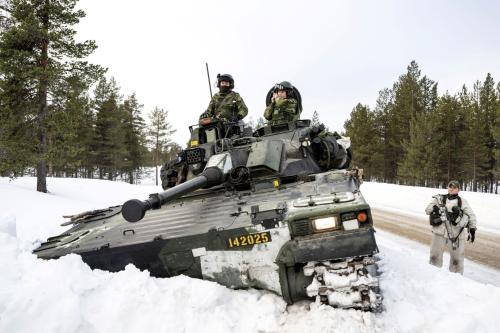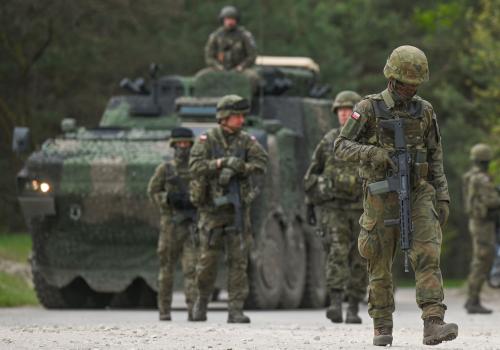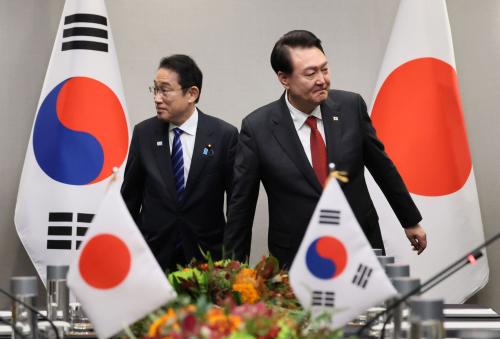In March 2015, the Nationwide Ceasefire Coordination Team representing 21 of Myanmar’s ethnic armed groups agreed to a draft nationwide ceasefire agreement (NCA) with the government. The broad support for the draft NCA gave hope for a resounding end to more than 60 years of conflict.
By October, of the 16 government-recognized dialogue partners only eight signed the final ceasefire agreement. The signing by eight ethnic armed groups (EAG) was in itself a significant achievement, establishing the country’s first formalized multi-party ceasefire among signatories, mandating political dialogue, and bringing over half the country’s conflict-affected areas under ceasefire.
The key issue that precluded full support was the question of “inclusivity.” The non-signatories to the NCA had refused to sign the agreement, as it didn’t include six non-state armed groups: Ta’ang National Liberation Army (TNLA), Arakan Army (AA), Myanmar National Democratic Alliance Army (MNDAA), Lahu Democratic Union (LDU), Arakan National Congress (ANC) and Wa National Organisation (WNO).
The latter three had long been inactive or militarily insignificant—the WNO, for example, was last active militarily in the late 1990s—as such it was deemed that they should instead join the political dialogue. The inclusion of the other three groups, however, became the straw that broke the camel’s back. The issue of inclusion in Myanmar amongst the country’s many ethnic groups has a complex history and has, since independence, played a key role in the state of peace and conflict of the country.
Alliance as defense, alliance as offense
Myanmar officially has 135 distinct ethnic groups. At one time or another since independence most of these groups have formed or supported an EAG. Given the diversity of ethnic identities in Myanmar, real resistance to the previous military regimes was futile without inter-ethnic group alliances. While this spirit of resistance between EAGs continues, alliances are often driven more by pragmatism—a large EAG asserting their centrality and power over a bloc of smaller EAGs. Importantly, occasional alliances of EAGs have been of tactical significance since the 1960s in creating several coordinated fronts and thus preventing the Myanmar armed forces, known locally as the Tatmadaw, from launching a single, full-strength offensive.
Since independence there have been four main actors in armed resistance movements against the central government. These are the two main EAGs, the Karen National Union (KNU) and Kachin Independence Organisation (KIO), as well as two now fragmented blocs, one of Shan armed groups, such as Restoration Council of Shan State (RCSS), and the other of EAGs that emerged from the Communist Party of Burma (CPB). A fifth actor, the student activists and the National League for Democracy (NLD), became the most significant non-violent opposition force after the 1988 mass uprising and enjoyed support from the armed groups—although the only armed group they were ever formally allied with was the All Burma Students’ Democratic Front.
Alliances emerging around these five main actors, and the groups that have emerged from them, have and continue to shape the nature of the conflict in Myanmar. However, despite their shared goal of resisting the central government, throughout Myanmar’s history they have seldom cooperated effectively together. If the peace process is to be successful, these four key armed actors, as well as the NLD, will have to bring the groups under their influence to the table and work together.
Over this period of resistance there are only a handful of instances where such a unified alliance of armed groups was achieved. One of the most significant was the formation of the Democratic Alliance of Burma (DAB), consisting of the KNU, the KIO, as well as several other groups following the crackdown of the 1988 mass uprising. The DAB was for some years a viable fighting force to the Tatmadaw. Yet unity between the two key EAGs collapsed after the KIO unilaterally withdrew in 1994 and signed a bilateral ceasefire with the government.
The breakdown of this promising alliance was the beginning of a breakdown in ethnic alliance more generally. What followed over the next decade was a series of bilateral ceasefire agreements with the government, where groups signed up to secure greater territorial control ahead of other EAGs or more simply, weak without alliances, signed for their own survival.
This period of go-it-alone competition ended with the opening of negotiations on a nationwide ceasefire agreement in late 2013, the first time the Myanmar government had willingly allowed a collective negotiation. What emerged was the formation of several new alliances—some open to ceasefire discussions, others less supportive of the process.
A case of disruptive alliance
The KIO and the United Wa State Army, a Chinese-speaking EAG formed from the remnants of the CPB, offer two examples in recent years of the impact that these actors can have on the peace process and, more specifically, the conduct and emergence of smaller EAGs.
As the KIO’s 1994 bilateral ceasefire began to break down in 2011 the idea of the Federal Union Army (FUA) was formed in the Union Nationalities Federal Council (UNFC), a coalition of ethnic armed organizations in which the KIO took the leading role and which also included the KNU until late 2014. The KIO sought to arm small groups such as the Arakan Army (AA), a group established in 2010 with KIO support and headquartered in KIO territory, and the Ta’ang National Liberation Army (TNLA), who could then act under the KIO leadership. The Myanmar National Democratic Alliance Army (MNDAA), which was driven out from its stronghold along the Chinese border in 2009, revived its recruitment and armament in 2012 and also joined the FUA.
The initial idea was to collectively assert military pressure on the Tatmadaw forcing the government to recognize the UNFC alliance. However, in the process of its creation, the KIO soon lost control of the FUA. When the MNDAA launched a major offensive in February 2015 under the banner of the FUA, the KIO and other long established EAGs were quick to dissociate themselves from the offensive. After the failed offensive, the TNLA, AA, and MNDAA strengthened their alliance in political, military, and economic issues.
Despite the groups’ lack of financial resources or significant assets to draw from, new weapons flooded to and through these EAGs, and they became a conduit for the procurement of arms and the trafficking of drugs. It appeared, at least to some extent, that these three EAGs had found a new patron other than the KIO. According to some sources, the United Wa State Army (UWSA), the best equipped and manned non-state armed group in Myanmar, provided the three EAGs with weapons or at least served as a crucial conduit for their provision.
Achieving peace
Peace processes by their very nature often provoke a fragmentation of non-state actors. Hard-line elements of these groups, unwilling to come to the table or wanting a larger seat at the table, chose to continue fighting. Other small groups take up arms hoping to fight their way into relevance and into an existing process. In some cases, non-state armed groups become proxies to larger interests that wish to exert influence in a peace process. Myanmar’s tremendous ethnic diversity increases the complexity in an already difficult peace process. Informal alliances between EAGs, which bring actors together or encourage the emergence of new agitators, have the ability to break or make a nationwide end to conflict in Myanmar.
The trust deficit between government and EAGs has remained a key weakness in ceasefire negotiations. This is despite a concerted effort on both sides and significant trust-building activities between some actors—such as those nationwide ceasefire agreement (NCA) signatories that now work together on the Joint Ceasefire Monitoring Committee.
The NLD, which assumed government in April after a landslide election victory, can play a unifying role in the ceasefire and peace process negotiations. Armed groups have previously considered the NLD as their natural ally in a fight against military rule. NCA non-signatories now have an opportunity to reconcile their past disputes against the government and join a process led by a new democratically elected NLD government. The change in government can act as an important face-saving opportunity for all parties to join the process and achieve peace.
The three smaller EAG actors outside the NCA that have been at the center of the debate on inclusiveness could join the peace process in the following ways: AA could merge with NCA signatory Arakan Liberation Party, as both EAGs advocate for the rights of Rakhine people; the MNDAA could disarm and join the political process, a feasible if difficult alternative considering the group’s objective to be recognized as an established armed organization; and the TNLA could complete negotiations with the government initiated in 2013 and sign a bilateral ceasefire agreement ahead of joining the NCA. More generally, established and representative EAGs should support alternative pathways for smaller, less representative, and newer groups in order for them to participate in the peace process.
Until these custodians of peace—the KIO, KNU, UWSA, RCSS (or Restoration Council of Shan State), the NLD-led government, and the Tatmadaw—can work together for a shared purpose, inclusivity in Myanmar’s peace process will likely remain a major challenge.



Commentary
Op-edPeace, alliance, and inclusivity: Ending conflict in Myanmar
April 1, 2016